| Durga | |
|---|---|
|
Goddess of War Victory of Good over Evil The Invincible One Fierce form of Mother Goddess | |
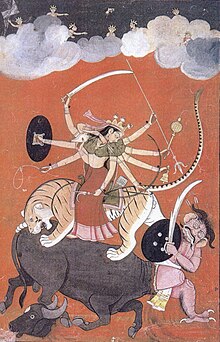 Durga Mahishasura-mardini, the slayer of the buffalo demon | |
| Bengali | ?????? ?? |
| Affiliation | Devi, Adi-Parashakti, Shakti Parvati, Chandika, Kali, Tripura Sundari, Sati |
| Weapon | Chakra (discus), Shankha (conch shell), Trishula (Trident), Gada (mace), Bow and Arrow, Scimitar and Shield, Ghanta (bell) |
| Mount | Tiger or Lion |
| Festivals | Durga Puja, Durga Ashtami, Navratri, Dussehra, Vijayadashami |
| Personal information | |
| Consort | Shiva |
| Children | Ganesha and Kartikeya |
Durga, also identified as Adi Parashakti, Dev?, Shakti, Bhavani, Parvati, Amba and by numerous other names, is a principal and popular form of Hindu goddess. She is the warrior goddess, whose mythology centers around combating evils and demonic forces that threaten peace, prosperity and dharma of the good. She is the fierce form of the protective mother goddess, willing to unleash her anger against wrong, violence for liberation and destruction to empower creation.
Durga is depicted in the Hindu pantheon as a goddess riding a lion or tiger, with many arms each carrying a weapon, often defeating Mahishasura (lit. buffalo demon). She appears in Indian texts as the wife of god Shiva, as another form of Parvati or mother goddess.
She is a central deity in Shaktism tradition of Hinduism, where she is equated with the concept of ultimate reality called Brahman. One of the most important texts of Shaktism is Devi Mahatmya, also called as Durg? Saptashat?, which celebrates Durga as the Goddess, declaring her as the Supreme Being and the creator of the universe. Estimated to have been composed between 400 and 600 CE, this text is considered by Shakta Hindus to be as important scripture as the Bhagavad Gita. She has a significant following all over India, Bangladesh and Nepal, particularly in its eastern states such as West Bengal, Odisha, Jharkhand, Assam and Bihar. Durga is revered after spring and autumn harvests, specially during the festival of Navratri.
Contents
Etymology and nomenclature
The word Durga (??????)(??????) literally means "impassable", "inaccessible", "invincible, unassailable". It is related to the word Durg (?????) which means "fortress, something difficult to access, attain or pass". According to Monier Monier-Williams, Durga is derived from the roots dur (difficult) and gam (pass, go through). According to Alain Daniélou, Durga means "beyond reach".
The word Durga, and related terms appear in the Vedic literature, such as in the Rigveda hymns 4.28, 5.34, 8.27, 8.47, 8.93 and 10.127, and in sections 10.1 and 12.4 of the Atharvaveda. A deity named Durgi appears in section 10.1.7 of the Taittiriya Aranyaka. While the Vedic literature uses the word Durga, the description therein lacks the legendary details about her that is found in later Hindu literature.
The word is also found in ancient post-Vedic Sanskrit texts such as in section 2.451 of the Mahabharata and section 4.27.16 of the Ramayana. These usages are in different contexts. For example, Durg is the name of an Asura who had become invincible to gods, and Durga is the goddess who intervenes and slays him. Durga and its derivatives are found in sections 4.1.99 and 6.3.63 of the Ashtadhyayi by P??ini, the ancient Sanskrit grammarian, and in the commentary of Nirukta by Yaska. Durga as a demon-slaying goddess was likely well established by the time the classic Hindu text called Devi Mahatmya was composed, which scholars variously estimate to between 400 and 600 CE. The Devi Mahatmya and other mythologies describe the nature of demonic forces symbolised by Mahishasura as shape-shifting and adapting in nature, form and strategy to create difficulties and achieve their evil ends, while Durga calmly understands and counters the evil in order to achieve her solemn goals.
There are many epithets for Durga in Shaktism and her nine appellations are (Navadurga): Shailaputri, Brahmacharini, Chandraghanta, Kushmanda, Skandamata, Katyayini, Kaalratri, Mahagauri and Siddhidatri. A list of 108 names of the goddess are recited in order to worship her and is popularly known as the "Ashtottarshat Namavali of Goddess Durga".
History and texts
One of the earliest evidence of reverence for Devi – the feminine nature of God, appears in chapter 10.125 of the Rig Veda, one of the scriptures of Hinduism. This hymn is also called the Devi Suktam hymn (abridged):
I am the Queen, the gatherer-up of treasures, most thoughtful, first of those who merit worship.
Thus gods have established me in many places with many homes to enter and abide in.
Through me alone all eat the food that feeds them, – each man who sees, breathes, hears the word outspoken.
They know it not, yet I reside in the essence of the Universe. Hear, one and all, the truth as I declare it.
I, verily, myself announce and utter the word that gods and men alike shall welcome.
I make the man I love exceeding mighty, make him nourished, a sage, and one who knows Brahman.
I bend the bow for Rudra , that his arrow may strike, and slay the hater of devotion.
I rouse and order battle for the people, I created Earth and Heaven and reside as their Inner Controller.
On the world's summit I bring forth sky the Father: my home is in the waters, in the ocean as Mother.
Thence I pervade all existing creatures, as their Inner Supreme Self, and manifest them with my body.
I created all worlds at my will, without any higher being, and permeate and dwell within them.
The eternal and infinite consciousness is I, it is my greatness dwelling in everything.– Devi Sukta, Rigveda 10.125.3 – 10.125.8,
Devi's epithets synonymous with Durga appear in Upanishadic literature, such as Kali in verse 1.2.4 of the Mundaka Upanishad dated to about the 5th century BCE. This single mention describes Kali as "terrible yet swift as thought", very red and smoky colored manifestation of the divine with a fire-like flickering tongue, before the text begins presenting its thesis that one must seek self-knowledge and the knowledge of the eternal Brahman.
Durga, in her various forms, appears as an independent deity in the Epics period of ancient India, that is the centuries around the start of the common era. Both Yudhisthira and Arjuna characters of the Mahabharata invoke hymns to Durga. She appears in Harivamsa in the form of Vishnu's eulogy, and in Pradyumna prayer. Various Puranas from the early to late 1st millennium CE dedicate chapters of inconsistent mythologies associated with Durga. Of these, the Markandeya Purana and the Devi-Bhagavata Purana are the most significant texts on Durga. The Devi Upanishad and other Shakta Upanishads, mostly dated to have been composed in or after the 9th century, present the philosophical and mystical speculations related to Durga as Devi and other epithets, identifying her to be the same as the Brahman and Atman (self, soul).
Origins
The historian Ramaprasad Chanda stated in 1916 that Durga evolved over time in the Indian subcontinent. A primitive form of Durga, according to Chanda, was the result of "syncretism of a mountain-goddess worshiped by the dwellers of the Himalaya and the Vindhyas", a deity of the Abhiras conceptualized as a war-goddess. Durga then transformed into Kali as the personification of the all-destroying time, while aspects of her emerged as the primordial energy (Adya Sakti) integrated into the samsara (cycle of rebirths) concept and this idea was built on the foundation of the Vedic religion, mythology and philosophy.
Epigraphical evidence indicates that regardless of her origins, Durga is an ancient goddess. The 6th-century CE inscriptions in early Siddhamatrika script, such as at the Nagarjuni hill cave during the Maukhari era, already mention the legend of her victory over Mahishasura (buffalo-hybrid demon).
Birth
Durga was born with the power of the 3 gods Brahma,Vishnu and Shiva to defeat the Asura Mahishasura
European traders and colonial era references
Some early European accounts refer to a deity known as Deumus, Demus or Deumo. Western (Portuguese) sailors first came face to face with the murti of Deumus at Calicut on the Malabar Coast and they concluded it to be the deity of Calicut. Deumus is sometimes interpreted as an aspect of Durga in Hindu mythology and sometimes as deva. It is described that the ruler of Calicut (Zamorin) had a murti of Deumus in his temple inside his royal palace.[44]
Attributes and iconography
Watch movie Durga online on Amazon
Watch movie Durga online
Watch The Movie On PrimeNavagraha Full HD Movie Download
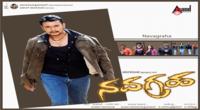
Champion Full HD Movie Download
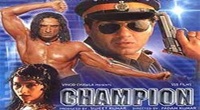
Shradhanjali Full HD Movie Download
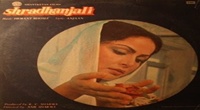
Chaalbaaz Full HD Movie Download
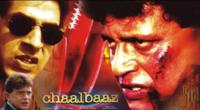
Unnal Mudiyum Thambi Full HD Movie Download
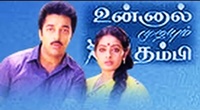
Bahu Begum Full HD Movie Download
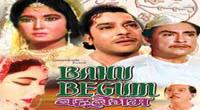
Jeene Ki Arzoo Full HD Movie Download
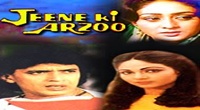
Pyar Ka Rishta Full HD Movie Download
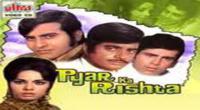
Hum Full HD Movie Download
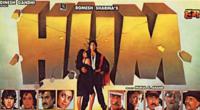
Karma (Malayalam) Full HD Movie Download
.jpg)
Amar Deep Full HD Movie Download
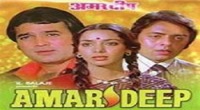
Aankhen (1993) Full HD Movie Download
.jpg)
Cheetah-The Leopard Full HD Movie Download

Shankar IPS Full HD Movie Download
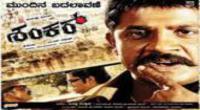
Uljhan (1975) Full HD Movie Download
.jpg)
Bharthavudyogam Full HD Movie Download
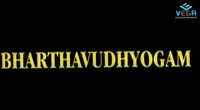
Nelavanka Full HD Movie Download
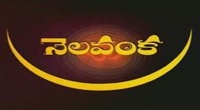
Padamati Sandhya Ragam Full HD Movie Download
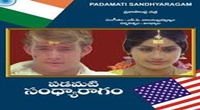
Neti Siddhartha Full HD Movie Download
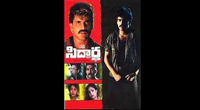
Alumogalu Full HD Movie Download
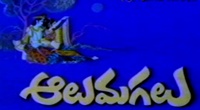
Maine Gandhi Ko Nahin Mara Full HD Movie Download
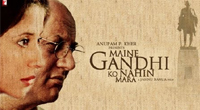
Download latest Movie from bollywood
- 1> baaghi 3
- 2> THE SKY IS PINK MOVIE FULL STORY AND REVIEW
- 3> Luka Chuppi
- 4> TO ALL THE BOYS I’VE LOVED BEFORE
- 5> Kabir Singh
- 6> Street Dancer 3D
- 7> Simmba
- 8> Gone Girl
- 9> The Girl Who Lived
- 10> Ludo
- 11> DILWALE DULHANIA LE JAYENGE
- 12> GUILTY
- 13> The Godfather
- 14> Adventures of Rusty
- 15> Sooryavanshi
- 16> Satyameva Jayate 2
- 17> Thappad
- 18> Bhool Bhulaiyaa 2
- 19> KGFChapter 2
- 20> Mardaani 2
- 21> Pinjar
- 22> Shivaji maharaj
- 23> Ek Villian 2
- 24> Hungama 2
- 25> Divergent
- 26> Mumbai Saga
- 27> The Internship
- 28> HIT (telugu)
- 29> Panga
- 30> The perfect date
- 31> 16 December
- 32> Gopala Gopala (Telugu)
- 33> Brahmastra
- 34> Gangubai Kathiawadi
- 35> Manmadhudu
- 36> Nenu local
- 37> Mahanati
- 38> Shatamanam bavathi
- 39> Lagaan
- 40> After
- 41> MOM
- 42> Shamshera
- 43> Raguvaran BTech
- 44> Khakee
- 45> The villain
- 46> OM
- 47> Mr. perfect
- 48> Bueatifull mind
- 49> Hichki
- 50> Gabbar Singh
- 51> Jogi
- 52> Before Sunrise
- 53> Before Sunset
- 54> Before Midnight
- 55> The Big Bull
- 56> Top Gun: Maverick
- 57> The Purge
- 58> The Sky is Pink
- 59> Laxmmi Bomb
- 60> Sadak 2
- 61> Sufna
- 62> Prithviraj
- 63> PK
- 64> Coolie No 1(2020)
- 65> Black Widow
- 66> Dear Zindagi
- 67> Dil Bechara
- 68> PHIR HERA PHERI
- 69> WAR
- 70> Dostana
- 71> RRR: Roudram Ranam Rudhiram
- 72> Maidan
- 73> Dabbang 3
- 74> Chhalaang
- 75> life as we know it
- 76> SherShaah
- 77> Sandeep Aur Pinky Faraar
- 78> Event Horizon
- 79> 83
- 80> Radhe: Your Most Wanted Bhai
- 81> Gunjan Saxena: The Kargil Girl
- 82> Mr India
- 83> Vivah
- 84> Anokha Bandhan
- 85> Ghost
- 86> Bhoot: Part One - The Haunted Ship
- 87> Haseen Dilruba
- 88> Laal Singh Chaddha
- 89> Qismat
- 90> Rajput
- 91> Drive
- 92> Dil Chahta Hai
- 93> Dil Ki Baazi
- 94> Dil Ka Rishta
- 95> Teesri Manzil
- 96> Dil
- 97> Love Aaj Kal
- 98> Khaali Peeli
- 99> Bunty Aur Babli 2
- 100> Atrangi Re
- 101> Gulabo Sitabo
- 102> Jodi
- 103> Suraj Pe Mangal Bhari
- 104> Deewana
- 105> Attack
- 106> Sardar Udham Singh
- 107> Toofan
- 108> THE LOVEBIRDS
- 109> Jersey
- 110> Ginny Weds Sunny
- 111> Thalaivi
- 112> Shiddat
- 113> Angels vs Zombies
- 114> Koi Mil Gya
- 115> Thank God
- 116> Bhuj: The Pride of India
- 117> Hum Aapke Hain Kaun
- 118> The Platform
- 119> Bird Box
- 120> Roohi Afzana
- 121> Torbaaz
- 122> Nikamma
- 123> World War Z
- 124> Extraction
- 125> Train to Busan
- 126> Life of Pi
- 127> SHAADI MEIN JROOR AANA
- 128> Himmat Aur Mehnat
- 129> To All The Boys: P.S. I Still Love You
- 130> Mimi
- 131> Good Newwz
- 132> Shubh Mangal Zyada Saavdhan
- 133> Raabta
- 134> Harry Potter and the Philosopher's Stone
- 135> Harry Potter and the Chamber of Secrets
- 136> Chhapaak
- 137> War of the Worlds
- 138> Harry Potter and the Prisoner of Azkaban
- 139> Harry Potter and the Goblet of Fire
- 140> MURDER MYSTERY
- 141> Shakuntala Devi
- 142> Bachchan Pandey
- 143> Jayeshbhai Jordar
- 144> Sheer Qorma
- 145> Saina
- 146> 'O' Pushpa I hate tears
- 147> Kedarnath
- 148> MS Dhoni The Untold Story
- 149> Chhichhore
- 150> Badhaai Ho
- 151> Unstoppable
- 152> Oz the Great And Powerful
- 153> The Girl on the Train
- 154> Haathi Mere Saathi 2020
- 155> The Conjuring: The Devil Made Me Do It
- 156> Gandhi Se Pehle Gandhi
- 157> The Song of Scorpions
- 158> Srimanthudu
- 159> Hello Guru Prema Kosame
- 160> Beauty and The Beast
- 161> Black Panther
- 162> Charlie and the Chocolate Factory
- 163> Bole Chudiyan
- 164> Fidaa
- 165> Duvvada Jagannadham
- 166> Bruce Lee: The Fighter
- 167> Hyper
- 168> Yaara
- 169> Red (2020)
- 170> Shivam
- 171> That Is Mahalakshmi
- 172> Nishabdham
- 173> Aashram 2020 web series
- 174> Laxmii
- 175> Mismatched
- 176> STUDENT OF THE YEAR 2
- 177> NAIL POLISH
- 178> Ramprasad Ki Tehrvi
- 179> KAAGAZ
- 180> 12 o Clock
- 181> The Power
- 182> bolo hau
- 183> Tribhanga
- 184> JAMUN
- 185> Madam Chief Minister
- 186> Maasaab
- 187> Aadhaar
- 188> Tanhaji
- 189> Bhaagi 3
- 190> Bhootnath
- 191> MALANG
- 192> Jai Mummy Di
- 193> Haathi Mere Saathi 2021
- 194> Shakeela
- 195> Unpaused
- 196> Annayya
- 197> Vamsoddharakudu
- 198> Mrugaraju
- 199> Narasimha Naidu
- 200> Sankranti
- 201> Manasu Maata Vinadhu
- 202> Anjaane
- 203> Apaharan
- 204> Bachke Rehna Re Baba
- 205> Bewafaa
- 206> Roohi
- 207> Radhe
- 208> Zindagi Khoobsoorat Hai
- 209> Yeh Mohabbat Hai
- 210> Yeh Kya Ho Raha Hai?
- 211> The Tomorrow War
- 212> DehradunDiary
- 213> Meri Shaadi Karaoo
- 214> Matruu Ki Bijlee Ka Mandola
- 215> No One Killed Jesica
- 216> Aag Ka Goola
- 217> Eight Million Dollars
- 218> Three Hundred
- 219> Cats and Dog
- 220> Decoy
- 221> Gold Rush
- 222> You Have Got Mail
- 223> Final Destination three
- 224> Tofan
- 225> Jungle
Request for Download movie Durga
- Bollywood movies
- Latest Bollywood movies
- Download all bengali movies
- Download all bhojpuri movies
- Download all english movies
- Download all gujarati movies
- Download all hindi movies
- Download all kannada movies
- Download all malayalam movies
- Download all marathi movies
- Download all oriya movies
- Download all punjabi movies
- Download all tamil movies
- Download all telugu movies
- Bollywood action movies
- Bollywood adventure movies
- Bollywood animation movies
- Bollywood classical movies
- Bollywood comedy movies
- Bollywood crime movies
- Bollywood devotional movies
- Bollywood documentary movies
- Bollywood drama movies
- Bollywood family movies
- Bollywood fantasy movies
- Bollywood historical movies
- Bollywood history movies
- Bollywood horror movies
- Bollywood musical movies
- Bollywood mystery movies
- Bollywood mythological movies
- Bollywood patriotic movies
- Bollywood romance movies
- Bollywood romantic movies
- Bollywood sci-fi movies
- Bollywood social movies
- Bollywood spiritual movies
- Bollywood sports movies
- Bollywood suspense movies
- Bollywood thriller movies
- Bollywood war movies
- Hot actress list
- Hot gujarati actress list
- Hot tamil actress list
- Hot bhojpuri actress list
- Hot assam actress list
- Hot bihari actress list
- Hot jammu and kashmir actress list
- Hot gujarati actress list
- Hot haryana actress list
- Hot konkani actress list
- Hot marathi actress list
- Hot odia actress list
- Hot punjabi actress list
- Hot rajasthani actress list
- Hot kannada actress list
- Hot malayalam actress list
- Hot telugu actress list
- Hot tulu actress list
- Hot Actress list from Indian city
- Hot actress list from ahmedabad
- Hot actress list from alappuzha
- Hot actress list from bangalore
- Hot actress list from bangalore
- Hot actress list from bhopal
- Hot actress list from chandigarh
- Hot actress list from chennai
- Hot actress list from guwahati
- Hot actress list from hyderabad, india
- Hot actress list from indore
- Hot actress list from jaipur
- Hot actress list from kannur
- Hot actress list from kochi
- Hot actress list from kolkata
- Hot actress list from kollam
- Hot actress list from kottayam
- Hot actress list from kozhikode
- Hot actress list from lucknow
- Hot actress list from madurai
- Hot actress list from mangalore
- Hot actress list from mumbai
- Hot actress list from mysore
- Hot actress list from new delhi
- Hot actress list from patna
- Hot actress list from pune
- Hot actress list from thiruvananthapuram
- Hot actress list from thrissur
- Hot actress list from tiruchirappalli
- Hot actress list from vijayawada
- Hot actress list from visakhapatnam
- All Bollywood Movies
- Bollywood Celeb
- >Art Director
- >Audiography
- >Background Music
- >Banner
- >Choreographer
- >Cinematographer
- >Costume Designer
- >Dialogue Writer
- >Director
- >Distributor
- >Editor
- >Executive Producer
- >Hair Stylist
- >Lyricist
- >Music Director
- >Photographer
- >Playback Singers
- >Presenter
- >Producer
- >Production Company
- >Production Designer
- >Screenplay
- >Singer
- >Sound
- >Actor
- >Story Writer
- >Studio
- >Video Director
- >Miscellaneous
- >Publicity (pro)
- >Web Creator
- >Production Labs
- >Publicity Design
- >Publicity Stills
- >Writer
- >Miscellaneous Artists
- >Visual Effects
- >Reporter
- >Music Company
- >Shooting Studios
- >Picturised On
- >Line Producer
- >Co Producer
- >Asst Director
- >Casting Director
- >Cinematography
- >Choreography
- >Dialouge
- >Editing
- >Lyrics
- >Music
- >Story
- >Playback Singer Female
- >Playback Singer Male
- >Actor In A Comic Role (male/female)
- >Child Artiste
- >Ensemble Cast
- >Actor Popular Choice (male)
- >Actor Popular Choice (female)
- >Sa Re Ga Ma Pa Song Of The Year
- >Actor In Supporting Role
- >Actress In Supporting Role
- >Actor In Leading Role
- >Art Direction
- >Actress In Leading Role
- >Sound Recording
- >Costume Design
- >Special Effects
- >Action
- >Actor In A Negative Role
- >Lifetime Achievement Award
- >Cinematic Exellence (director)
- >Cinematic Exellence (male)
- >Cinematic Exellence (female)
- >International Male Icon
- >International Female Icon
- >Actor In A Supporting Role (male)
- >Actor In A Supporting Role (female)
- >Actor In A Comic Role
- >Playback Singer (male)
- >Playback Singer (female)
- >Most Promising Debut (female)
- >Most Promising Debut (male)
- >Most Promising Director
- >Sound Design
- >Lifetime Jodi
- >Marketed Film
- >Jury Award For Best Actor
- >Jury Award For Best Actress
- >Jury Award For Best Film
- >Jury Award For Best Director
- >Playback Singer(male)
- >Lifetime Acheivement Award (male)
- >Excellence Award
- >Jodi Award
- >Performer Of The Year
- >Presented By
